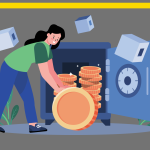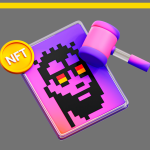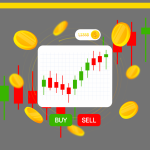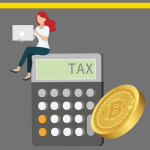Bitcoin mining has become a popular way to earn cryptocurrency. However, it’s important to understand the process and the risks involved before diving in. In this guide, we’ll walk you through the steps of Bitcoin mining, from setting up your mining rig to understanding the costs and rewards.
H2: Understanding Bitcoin Mining
H3: What is Bitcoin Mining?
Bitcoin mining is the process of verifying transactions on the Bitcoin blockchain network and adding new blocks to the chain. Miners use powerful computers to solve complex mathematical problems. When a miner solves a problem, they are rewarded with a certain amount of Bitcoin.
1. medium.datadriveninvestor.com
H3: How Does Bitcoin Mining Work?
The Bitcoin blockchain uses a proof-of-work consensus mechanism. This means that miners must expend computational power to verify transactions and create new blocks. The first miner to solve a problem wins the block reward.
H3: Why is Bitcoin Mining Important?
Bitcoin mining is essential for the security and decentralization of the Bitcoin network. Miners help to secure the blockchain by verifying transactions and preventing double-spending. Additionally, mining helps to distribute new Bitcoin into circulation.
H2: The Equipment Needed for Bitcoin Mining
H3: Hardware Requirements
To mine Bitcoin, you’ll need specialized hardware. The most efficient option is an ASIC miner, which is designed specifically for Bitcoin mining. However, GPUs and CPUs can also be used, although they are less efficient.
H4: ASIC Miners
ASIC miners are the most powerful and efficient option for Bitcoin mining. They are designed to perform the specific calculations required for Bitcoin mining at a much faster rate than GPUs or CPUs.
H4: GPUs
Graphics processing units (GPUs) can also be used for Bitcoin mining, but they are less efficient than ASIC miners. GPUs are typically used by individuals who want to start mining with a smaller investment.
H4: CPUs
Central processing units (CPUs) can be used for Bitcoin mining, but they are the least efficient option. CPUs are generally not suitable for large-scale mining operations.
H3: Software Requirements
In addition to hardware, you’ll also need specific software to mine Bitcoin. This includes Bitcoin mining software and a Bitcoin wallet.
H4: Bitcoin Mining Software
There are several different Bitcoin mining software options available. Some popular choices include CGMiner, BFGMiner, and AntMiner.
H4: Bitcoin Wallets
A Bitcoin wallet is a digital wallet that stores your Bitcoin. There are many different types of wallets available, including hardware wallets, software wallets, and online wallets.
H2: Setting Up a Bitcoin Mining Rig
H3: Assembling the Hardware
Once you have your hardware and software, you can start assembling your mining rig. This involves connecting the components together and configuring the hardware.
H3: Installing the Software
After assembling your rig, you’ll need to install the Bitcoin mining software. Follow the instructions provided with the software to complete the installation.
H3: Configuring the Mining Software
Once the software is installed, you’ll need to configure it to connect to a Bitcoin mining pool. A mining pool is a group of miners who combine their computing power to increase their chances of finding a block.
H2: Joining a Bitcoin Mining Pool
H3: What is a Bitcoin Mining Pool?
A Bitcoin mining pool is a group of miners who combine their computing power to increase their chances of finding a block. When a pool member finds a block, the reward is shared among all members of the pool.
H3: Benefits of Joining a Bitcoin Mining Pool
Joining a Bitcoin mining pool has several benefits. It can help you to earn a more consistent income from mining, and it can reduce the risk of going long periods without finding a block.
H3: Choosing a Bitcoin Mining Pool
There are many different Bitcoin mining pools to choose from. When selecting a pool, consider factors such as the pool’s size, fees, and payment frequency.
H2: The Mining Process
H3: How the Mining Process Works
Once your mining rig is set up and connected to a pool, you can start mining Bitcoin. The mining process involves your rig solving complex mathematical problems. If your rig is the first to solve a problem, you will receive a block reward.
H3: Factors Affecting Mining Difficulty
The difficulty of mining Bitcoin changes over time. As more miners join the network, the difficulty increases. This is to ensure that new blocks are added to the blockchain at a consistent rate.
H3: The Reward for Mining Bitcoin
The reward for mining a block is currently 6.25 Bitcoin. This reward is halved every four years.
H2: The Costs Involved in Bitcoin Mining
H3: Hardware Costs
The cost of Bitcoin mining hardware can vary depending on the type of hardware you choose and the current market prices.
H3: Electricity Costs
Bitcoin mining can be energy-intensive. The cost of electricity will be a significant factor in your mining profitability.
H3: Internet Costs
You’ll need a reliable internet connection to mine Bitcoin. The cost of your internet service will depend on your location and the speed of your connection.
H3: Cooling Costs
Mining rigs can generate a lot of heat. You may need to invest in cooling equipment to keep your rig running efficiently.
H2: The Risks and Challenges of Bitcoin Mining
H3: Volatility of Bitcoin Price
The price of Bitcoin can be highly volatile. If the price of Bitcoin drops, your mining profitability may also decline.
H3: Competition from Larger Mining Operations
There are many large-scale mining operations that have significant advantages in terms of hardware and electricity costs. This can make it difficult for smaller miners to compete.
H3: Environmental Impact
Bitcoin mining can have a significant environmental impact due to the amount of energy it consumes.
H3: Regulatory Risks
Governments around the world are increasingly regulating cryptocurrency activities. This could have an impact on Bitcoin mining.
H2: Profitability of Bitcoin Mining
H3: Factors Affecting Profitability
Several factors can affect the profitability of Bitcoin mining, including the price of Bitcoin, the difficulty of mining, the cost of electricity, and the efficiency of your mining hardware.
H3: Calculating Mining Profitability
There are several online calculators available that can help you to estimate your mining profitability. These calculators take into account factors such as your hardware, electricity costs, and the current price of Bitcoin.
H3: Is Bitcoin Mining Still Profitable?
Whether or not Bitcoin mining is profitable depends on a variety of factors. It’s important to do your research and carefully consider the costs and risks involved before deciding to start mining.











 Bitcoin
Bitcoin  Ethereum
Ethereum  Tether
Tether  Solana
Solana  USDC
USDC  XRP
XRP  Lido Staked Ether
Lido Staked Ether  Dogecoin
Dogecoin  Toncoin
Toncoin